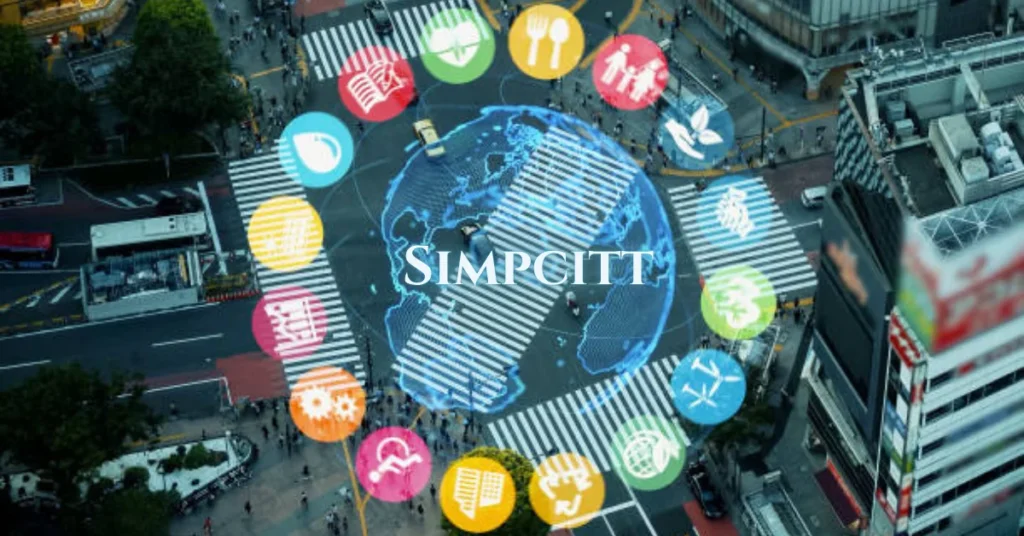Introduction: The Digital Revolution in Urban Engagement
Imagine a world where your voice directly shapes the urban landscape—a place where democracy transcends physical boundaries and thrives in the digital realm. Welcome to Simpcitt, a groundbreaking platform that champions virtual democracy and redefines how cities evolve.
This “living map” of civic engagement empowers everyday citizens to take an active role in decision-making processes that impact their communities. As technology progresses, Simpcitt stands at the forefront of this transformation—merging public input with urban planning to build better, smarter cities.
What Is Virtual Democracy?
Redefining Governance in a Connected World
Virtual democracy is a modern take on traditional governance, where technology becomes the primary channel for civic participation. It allows individuals to engage in political processes from anywhere in the world, breaking down geographic and institutional barriers.
Key Features of Virtual Democracy:
- Wider Accessibility: Citizens can participate via online platforms.
- Greater Inclusivity: Marginalized groups gain a voice in policy discussions.
- Transparency & Accountability: Real-time updates and open feedback foster trust.
- Information Equality: Everyone has access to the same policy information.
- Power Redistribution: Empowers citizens instead of concentrating authority.
By enabling this level of participation, virtual democracy helps create systems that are more responsive to the people’s actual needs—not just the agendas of elected representatives.
How Does Simpcitt Work?
Interactive Digital Engagement
Simpcitt operates as a participatory platform where citizens connect directly with local governance structures. It turns urban planning into a collaborative, transparent, and inclusive experience.
Core Functionalities:
- User-Friendly Tools: Mapping software and forums allow people to share ideas on community needs.
- Real-Time Feedback: Citizens provide input on policies and projects instantly.
- Collaboration Hubs: Users team up on shared initiatives for greater impact.
- Visual Simulations: Digital urban landscapes help residents visualize proposed changes.
- Living Repository: A constantly evolving database of citizen feedback informs future decisions.
The Benefits of Virtual Democracy and Urban Futures
Empowering Inclusive and Sustainable Development
Simpcitt’s model enhances urban development by promoting broader participation, sustainability, and transparency.
Advantages at a Glance:
- Inclusivity: Encourages input from diverse community members.
- Transparency: Clear records of proposals and decisions build public trust.
- Dynamic Feedback: Real-time dialogue enables quick adjustments to plans.
- Innovation: Fosters creative problem-solving via tech-based engagement.
- Sustainability: Helps shape environmentally responsible urban initiatives.
This results in communities that are not only more engaged but also better equipped to handle the complexities of modern urban life.
Real-World Success: Simpcitt in Action
Global Case Studies Demonstrating Impact
Barcelona, Spain
Residents used Simpcitt to voice transportation concerns. Their feedback led to redesigned bus routes and expanded bike lanes.
Melbourne, Australia
Community members collaborated via Simpcitt’s interactive maps to develop neighborhood plans with green spaces and pedestrian zones, fostering local pride and ownership.
Bogotá, Colombia
Citizens participated in budget planning through Simpcitt, directly influencing how public funds were allocated in their communities.
These implementations showcase Simpcitt’s ability to turn digital participation into tangible civic improvements.
Challenges and Criticisms of Virtual Democracy
Addressing the Limitations
While virtual democracy is promising, it’s not without its hurdles.
Common Challenges:
- Digital Divide: Not all individuals have reliable internet or digital devices.
- Data Security: Concerns over privacy can limit open participation.
- Representation Gaps: Tech-savvy groups may dominate discussions.
- Echo Chambers: Online platforms can reinforce like-minded thinking, reducing diverse dialogue.
- Engagement Quality: Quick digital responses may lack depth compared to in-person forums.
Addressing these concerns is critical to ensure virtual democracy is equitable and effective for all.
Conclusion: The Future of Virtual Democracy and Urban Planning
Simpcitt is more than a digital tool—it’s a visionary framework for participatory governance. As cities face growing complexity, engaging the public becomes essential. Simpcitt offers a scalable, flexible, and transparent solution by turning civic input into actionable insights.
Through ongoing innovation, the platform has the potential to integrate advanced technologies like AI and machine learning, further enhancing decision-making. Ultimately, platforms like Simpcitt can bridge the gap between policymakers and communities, leading to more inclusive, responsive, and sustainable cities.
By embracing virtual democracy, we’re not just reshaping cities—we’re reshaping the very fabric of democracy for the digital age.
ALSO READ: Len Pullen: Legacy of Business Success and Visionary Thinking
FAQs
What is Simpcitt used for?
Simpcitt is a digital platform that enables citizens to participate in urban planning and governance through real-time feedback and interactive mapping tools.
How does Simpcitt improve transparency in government?
It provides open access to policy discussions, project updates, and feedback loops, allowing citizens to track decision-making processes.
Can anyone use Simpcitt?
Yes, the platform is designed for public use. However, effective participation requires internet access and basic digital literacy.
What types of projects can be influenced through Simpcitt?
Projects include transportation planning, public budgeting, green space development, infrastructure changes, and more.
What sets Simpcitt apart from other civic tech tools?
Simpcitt acts as a “living map” that visualizes public opinion and urban changes in real time, fostering deep engagement and collaboration among citizens.






